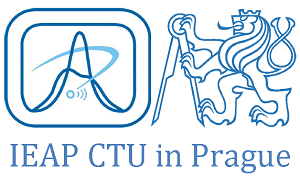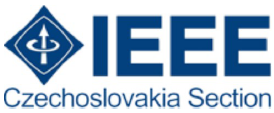
Probing fundamental properties of matter with nuclear spectroscopic measurements at IFIN-HH Bucharest and IEAP CTU in Prague
Radu-Emanuel Mihai
IFIN-HH Bucharest & IEAP CTU in Prague
Abstract: In light of the fact that I am participating in a short postdoctoral mobility program, I will divide my presentation in two sections: the first part will be dedicated to research activities at my home institution(National Institute for Physics and Nuclear Engineering, Bucharest-Magurele, Romania), while the second part will focus on my scientific investigations at the hosting institution, IEAP CTU in Prague:
I.
Bound states of the atomic nucleus can be described by few physical quantities, such as radius, mass, binding energy, electric charge, parity, dipole and quadrupole electric moments (static properties), decay probability and reaction cross sections (dynamic properties). All of these observables vary wildly based on the number of protons and neutrons, showing changes in the intrinsic structure of the nucleus. Gamma spectroscopy is the most widely used method for studying the nuclear structure, as values for all physical quantities can be deduced directly or indirectly in this way. Most often, nuclear reactions and radioactive decay produce nuclei which are in excited states and seek stability through electromagnetic interaction, resulting in detectable electromagnetic radiation (gamma radiation and conversion electrons). Through gamma spectroscopy, fundamental properties of the nuclear excited states can be determined with the aid of conservation laws and selection rules. Determining transition probabilities between distinct nuclear states offers direct information about their structure. One of the most active fields of gamma spectroscopy is the measurement of excited nuclear state lifetimes. The most significant comparison between theoretical nuclear structure models and experimental observations is done by deducing wave functions of nuclear excited states, matrix elements related to the lifetimes being among the most sensitive elements. The presentation will focus on real examples of advanced spectroscopic measurement techniques employed at IFIN-HH.
II.
Neutron radiation effects on semiconductor detectors have long been investigated, as it offers a more complete understanding of the amount of damage to which such sensors can be subjected while operating them under extreme experimental conditions. The competition between ionizing (IEL) and non-ionizing energy losses (NIEL) was described theoretically through partition functions, which are in a fair degree of agreement with silicon sensor experimental observations and prompt the need for extending the studies to other materials which are used for radiation detection, like gallium arsenide(GaAs) and cadmium telluride(CdTe). The presentation aims to deliver a comprehensive look at the analysis process of relevant experimental data taken with Timepix3 detectors. This will lead to new results on the competition between IELs and NIELs of recoil nuclei in semiconductor lattices following fast neutron interactions.
Seminar takes place on Tuesday, June 13th 2023 at 2:45 PM
in the IEAP meeting room, Praha 1, Husova 240/5.
| Ing. Bartoloměj Biskup, Ph.D. seminar organizer |
doc. Ing. Ivan Štekl, CSc. director of IEAP |
doc. Dr. André Sopczak IEEE CS - NPSS chair |
 NUCLEAR & PLASMA SCIENCES SOCIETY CHAPTER
NUCLEAR & PLASMA SCIENCES SOCIETY CHAPTER
IEEE Czechoslovakia section

